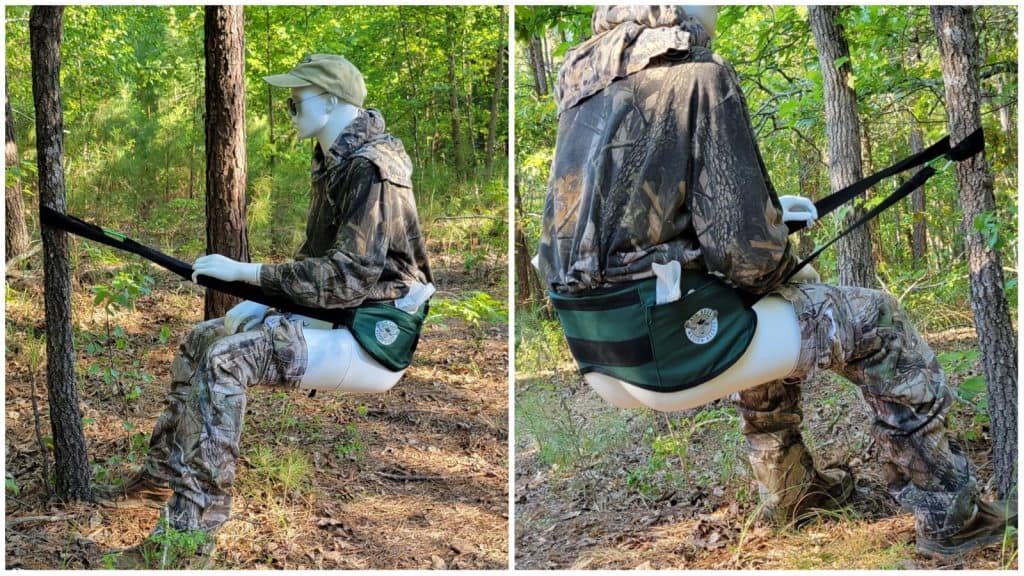Thoughtful essay. Excerpt: “[Sen.] Wyden’s support of pre-fire management is certainly a step in the right direction. But without equal attention given to post-fire management, Oregon’s legacy of beautiful, forest landscapes will evolve into forestland deserts covered by brush and dead, gray-ghost trees.”
Shalom Smokey: A Place for Philosophy, Political Philosophy, Politics and All That
Some TSW readers, including at least one Anonymous, seem to have energy around discussing the political, philosophical and metaphysical underpinnings of the issues we deal with. To that end , I’m opening a special section called Shalom Smokey. As with everything, it’s an experiment, and we’ll see how it goes.
So back to our discussion of my post about Taking a Deep Breath. Mike said:
“People will trust their own observations over any level of rhetoric.” That simply isn’t true and there is a plethora of research that proves it is wrong. In fact, what happens is the rhetoric “informs” people how they should interpret their observations. The rise in and effectiveness of dissemination of misinformation and its effectiveness should be enough evidence all by itself to help you understand your statement is incorrect.
I think many disagreements are simply that we talk past each other, because we are thinking of different examples. Mesic or dry forests, American chestnut or spotted owls. In my case, I wasn’t thinking of politics at all. I was thinking of two of my other favorite non-forest topics, mysticism in religion, and parapsychology/mediums/near-death experiences. People who have these experiences traditionally have not been able to be argued out of them by authorities. That’s why authorities had to burn people at the stake. Imagine you went to a medium and know in some way that you have communicated with a non-living relative. If you read a book by a materialist scientist who tells you it isn’t possible.. or a religious authority who tells you you were really speaking to diabolic forces, most people I talk to (which may not be a random sample) will just nod their head, but you actually haven’t changed their mind.
What I’ve noticed from my experience, is that many people have had these experiences, but they may not feel that it is safe to talk about them. So they effectively keep their beliefs underground. There’s a corollary here also.. mistrust of people who tell you to believe something you know not to be true. I think it’s more obvious in spiritual belief world.. who are you to tell me what to believe? Do your ideas count more than my experiences? Why are you interested in converting me, can’t you leave me alone? What’s in it for you? The Inquisition folks thought they were right. In fact, the US founders were escaping wars between people who thought they were right and they should tell other people what to do. Think Munster Rebellion.
Or one of my favorite stories is a presentation at an SAF convention probably 30 years ago now. A professor had done research on Red-Cockaded Woodpecker. A field forester in the audience afterwards pointed out that he had seen a bird somewhere not predicted by the model. So to me this was the most magical of moments.. how can both things be true? What’s going on there? Sadly, the prof just said basically “your observation is not in the literature.” As if there are observations, and there is literature, and it’s not important for them to meet to get at the truth. Do you think the field forester changed his mind about what he saw and where it was?
Both people were good-hearted, I’m sure. The problem was that at the time, the places to have that kind of dialogue did not exist. Now it does. Or should, IMHO.
Yesterday, I was on a Zoom call with Dr. Frank Luntz, a political scientist who seems to know a lot of stuff (an article based on his data is coming out in the New York Times supposedly on Tuesday). He sounded disappointed that people trust institutions less. But institutions have to act trustworthy to retain trust. Think about prescribed fire, the 90 day stand-down, and the public’s involvement in the analysis and release of findings. Compare that to say, the question of Covid origins. So to my mind, people have to trust you for them to allow you to question their experiences. And so we’re back to relationships and trust.
***************
Toby pointed out “However, the weak point is figuring out how to convince the truly ignorant that there is better information available, or to at least to entertain the notion that perhaps there are other perspectives that are more informed by and consistent with reality. I’d appreciate some guidance on this one.”
Again, I start from the premise “why can’t we leave the ignorami alone?” And when is diversity of views a good thing, and when a bad thing, and why?
And some more academic research about diverse views, via our friends the fisheries folks..
In this work, we draw on collective intelligence (CI) theory and hypothesize that the aggregation of LK from diverse stakeholder groups can produce more complete and potentially more accurate representations of complex problems with interconnected social and environmental components. CI is typically defined as a group phenomenon that enables a group to accomplish complex tasks where individuals or any subset within it might fail (12). This group advantage may emerge when a collective of individuals either collaborate or independently aggregate their knowledge to address a problem (12⇓–14). The group may, therefore, benefit from a larger, more refined, or recombined body of knowledge, because aggregation mechanisms filter out errors and biases, compensate for individuals’ insufficiencies, or result in innovative solutions (e.g., refs. 15⇓–17)
For sure, that’s not politics exactly, but still..
And of course, there are post-modernist views that it is impossible to have facts outside of their social construction. From a class at the Brooklyn Institute for Social Research that apparently was held last year called Michel Foucault: Truth and Power
Does the genealogical method of inquiry necessarily undermine the idea of objective truths that are stable across place and time? What are the implications of arguing, as Foucault does, that human history is characterized by ruptures and discontinuities in what we hold to be true? What is a discourse, and how does it render certain ideas credible and others beyond the pale? What are the means through which “regimes of truth” have historically operated, and to what effect? Is it still possible to speak of facts outside of their social construction? And to what extent is the debunking of objectivity associated with Foucault and his followers implicated in our own world of alternative facts?
So there’s many places this discussion could lead us, let’s continue.
TGIF Smokey Wire Edition: Australians’ Fire Objectives, Surprising New Technologies and More
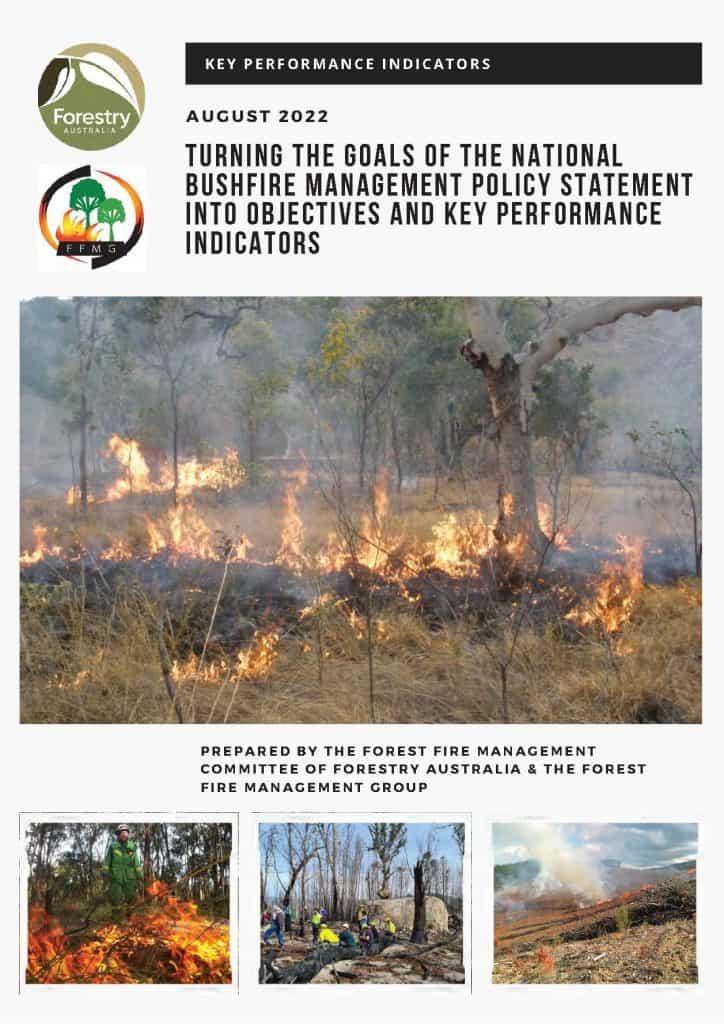 Too many stories of interest to go into deeply.
Too many stories of interest to go into deeply.
Australians Think About Objectives and Key Performance Indicators for Bushfire Management
It’s always interesting to see how other countries deal with the same issues we do.
The Goals described in the National Bushfire Management Policy Statement for “Effectively Managing the Land with Fire” can be divided into the following objective themes. These themes then need to be expressed in more specific terms to become landscape-level management objectives. For a management objective to be useful, it must be Specific, Measurable, Achievable, Relevant, and Time-bound (SMART). The themes identified are:
a) Reduce wildfire severity and extent
b) Reduce impact of fire on human life and property, social and commercial values, and critical
infrastructure.
c) Maintain viable, resilient and sustainable ecosystems
d) Maintain or enhance landscape productivity including wood, water, carbon, biodiversity and
other ecosystem services
e) Use adaptive management
f) Increase or maintain the level of social licence to manage forests and rangelands
g) Increase or maintain the level of Indigenous cultural and social connection through use of fire
The objectives and KPIs seem very down to earth. check it out here KPI-Doc. Lots of interesting stuff in this document.
Housing
Interesting story on resort towns where people can’t afford to live.. related to difficulties FS employees’ retention.
Compelling New Technologies
Number 1.. sustainable batteries which also don’t depend on imported minerals..
Stora Enso and Northvolt are joining forces to create sustainable batteries using lignin-based hard carbon produced with renewable wood from the Nordic forests. The aim is to develop the world’s first industrialised battery featuring anode sourced entirely from European raw materials, lowering both the carbon footprint and the cost.
The companies have entered into a Joint Development Agreement to create a sustainable battery featuring anode produced from renewable raw materials sourced sustainably and locally in the Nordic countries.
“The joint battery development with Northvolt marks a step on our journey to serve the fast-growing battery market with renewable anode materials made from trees. Our lignin-based hard carbon, Lignode® by Stora Enso, will secure the strategic European supply of anode raw material, serving the sustainable battery needs for applications from mobility to stationary energy storage,” says Johanna Hagelberg, Executive Vice President for Biomaterials at Stora Enso.
And Number 2. (of course), from the always-informative and entertaining Cowboy State Daily.
What A Way To Go: ‘Krapp Strapp’ No. 1 Way For Wyo Outdoorsmen To Do No. 2, Inventor Says
The company specializes in hunting decoys, but one of its best-selling products is the “Krapp Strapp.” It’s a device that allows users to lean into a padded strap, thereby taking the weight off their joints while answering nature’s call. ..
When shown a photo of the Krapp Strapp, noted Wyoming outdoorsman Paul Ulrich agreed it would be great for older adventurers or other people with joint problems. But he was incredulous about its practicality for younger, fit hunters trying to pack light in grizzly country.
“Reminds me of the scene with the goat in ‘Jurassic Park,’” Ulrich told Cowboy State Daily. “Nothing easier for a predator than a meal tethered to a tree with its pants down.”
This excerpt would be incomplete without a photo..
Californians Disagree About Solar
One of my favorite reporters, Sammy Roth, covers the always-watchable Californians grappling with decarbonization. Basically, people have solar panels. How much should utilities pay them for their energy? Does that come out of the pockets of people who can’t afford solar panels? How do you do decarbonizing and social justice at the same time? Indeed, liquids are bubbling in the laboratories of democracy.
But it could still have dramatic ripple effects in the burgeoning rooftop solar market as the Golden State struggles to phase out planet-warming fossil fuels while avoiding blackouts and keeping electricity bills from spiraling out of control. And it’s sure to spark a bitter fight in Sacramento, as rooftop solar installers, monopoly utility companies and labor unions whose members build large-scale solar farms duke it out over the best way for California to confront the climate crisis. Already, the new plan is generating criticism from both the solar industry and a group backed by Southern California Edison and other utilities. The utilities say low-income households are being forced to subsidize wealthier solar customers.
Thank You to Veterans: New Lifetime Pass
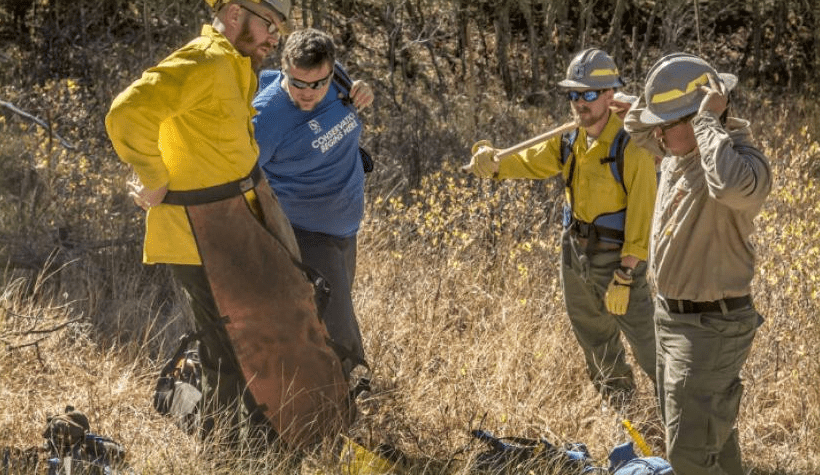
To all Veterans here, thank you for your service!
New this year is a lifetime pass for current service members and their dependents, Veterans and Gold Star Families for federal lands.
On Veterans Day 2022, the National Park Service will unveil a lifetime pass providing free entrance to national parks for Veterans and their families. The Interagency Military Lifetime Pass waives entrance fees for the National Park Service and the U.S. Fish and Wildlife Service, and standard amenity recreation fees for the Bureau of Land Management, Bureau of Reclamation, U.S. Forest Service and U.S. Army Corps of Engineers sites for current military service members and their dependents, Veterans and Gold Star Families.
Veterans and their families have free access to approximately 2,000 public locations spread out across more than 400 million acres of public lands, which host activities to fit any lifestyle—from serene to high octane, including hiking, fishing, paddling, biking, hunting, stargazing, camping, and much more.
The Military Pass has been expanded to include a pass that does not expire for Veterans and Gold Star Family members. The National Defense Authorization Act of 2022 authorized a free lifetime pass to national parks and other federal recreational lands for eligible Veterans and Gold Star Families. In recent years, they were able to receive annual passes.
eterans and their families have free access to approximately 2,000 public locations spread out across more than 400 million acres of public lands, which host activities to fit any lifestyle—from serene to high octane, including hiking, fishing, paddling, biking, hunting, stargazing, camping, and much more.
The Military Pass has been expanded to include a pass that does not expire for Veterans and Gold Star Family members. The National Defense Authorization Act of 2022 authorized a free lifetime pass to national parks and other federal recreational lands for eligible Veterans and Gold Star Families. In recent years, they were able to receive annual passes.
Are you eligible?
For purposes of this program, a Veteran is identified as an individual who has served in the United States Armed Forces, including the National Guard and Reserve, and is able to present one of the following forms of valid (unexpired) identification:
- Department of Defense Identification Card
- Veteran Health Identification Card (VHIC)
- Veteran ID Card
- Veterans designation on a state-issued U.S. driver’s license or identification card
Gold Star Families are next of kin of a member of the United States Armed Forces who lost his or her life in a “qualifying situation,” such as a war, an international terrorist attack, or a military operation outside of the United States while serving with the United States Armed Forces.
**************
Also Associate Chief Angela Coleman wrote this note to Forest Service employees:
This Friday, Nov. 11, please join me in thanking and honoring our nation’s veterans for all of their service and sacrifice in defense of this nation and protection of our freedoms as Americans. Friday isn’t just a day off from work. It’s a day to acknowledge the debt we owe our servicemembers and military families who continually put service before self.
In the Forest Service, we acknowledge the many veterans who help this agency fulfill its mission. There are more than 5,000 former military members and military family members who work for the Forest Service, nearly 15% of our permanent workforce.
The veterans who join the federal civilian workforce are choosing to continue service to their country, albeit in a different form. Veterans come to us with considerable skills, extensive training and a huge range of life experiences. They put all of that to use in valuable ways throughout the agency. We are fortunate to have them with us.
To all of our Forest Service veterans and your families, thank you for all you have done, and all you continue to do, for our country.
I also ask all employees to take time this Veterans Day to thank our veterans—your coworkers—for their continued service to our country. Have a safe, wonderful weekend.
Additional resources
Learn more about employee resource group SALUTE, composed of Forest Service military veterans and their allies, in today’s employee perspective and via the group’s SharePoint site.
Signs of a new tree mortality event showing up in the Sierra Nevada
From the Sierra Nevada Conservancy. A natural thinning — natural and due to climate change.
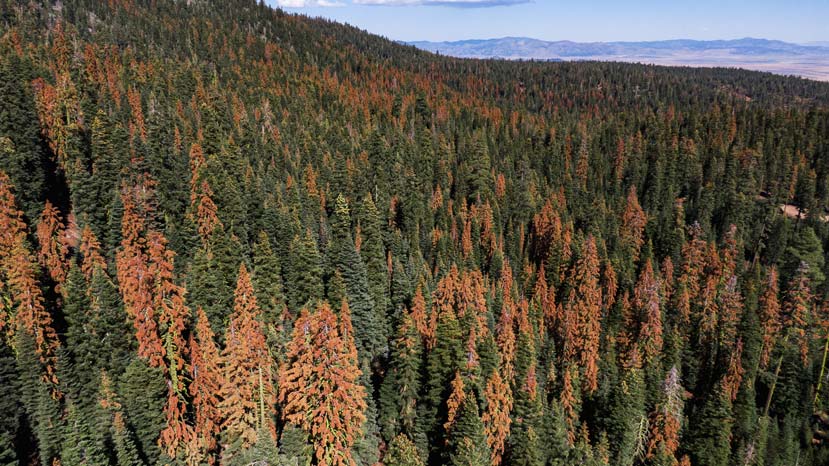
In 2022, preliminary results from the U.S. Forest Service’s Aerial Detection Survey, and field observations, suggest the emergence of a new tree mortality event disproportionately impacting higher-elevation fir forests in the northern and central parts of the state.
For some Californians, it has evoked a not-so-distant memory of the devastating southern Sierra tree mortality outbreak on the heels of the 2012–2016 drought, and the dangerous and unprecedented behavior of the 2020 Creek Fire that burned through the heavily impacted areas. For others, particularly in the central and northern part of our state that was largely unaffected by that event, it raises new concerns about forest ecosystem health and mounting wildfire risk.
What happens next will depend on future weather patterns, and whether land managers can catch up on long-needed, forest-restoration efforts.
Drivers of tree mortality
Large-scale tree mortality is mainly driven by abnormally high temperatures and prolonged drought, as scarcity of water strains otherwise healthy trees. The lack of water supply is exacerbated by increased competition among trees located in dense forests.
Unfortunately, many forests throughout the Sierra Nevada are two to five times denser than historical levels, largely due to removal of fire from the landscape. The dense stands of weakened water-stressed trees are more susceptible to diseases and insect infestations.
Management vs. Preservation
Two articles listed in Nick Smith’s HFHC email today, with radically different views:
First, a biased article, IMHO — more of an op-ed — from The Hill. DellaSala get a lot of ink. :”Government failing to protect US forests most critical to fighting climate change, activists say.”
Excerpt:
“It’s the large trees — the oldest trees in the forest — that are our best carbon reservoirs,” forest scientist Dominick DellaSala of advocacy group Wild Heritage told reporters on Tuesday.
About 35 percent of U.S. forestland is composed of these forests, principally on federal land, according to a study DellaSala co-authored in September, published in Frontiers.
Yet only a quarter of those most valuable forests are under explicit protection, the authors found — and if logged over the next decade, would result in a significant uptick in U.S. emissions.
Logging of these old stands is unlikely. However, Michelle Connolly, of forestry nonprofit Conservation North, says: “Left alone, forests will largely balance themselves, she argued. “Emissions released from insects and fire are largely out of our control, whereas forestry emissions are under our direct control,” she said.”
Next, from The Daily Californian, a UC Berkeley newspaper. “UC Berkeley researchers study damages to forests, wildlife.” Researchers get the ink.
Excerpt:
“The more dense a forest is, the more vulnerable it is to disturbance,” said Zack Steel, a research scientist with the Forest Service Rocky Mountain Research Station.
Compact forests, Steel added, make it easier for fires and [the impacts of] droughts to spread, consequently endangering the animals inhabiting them.
Considering the effects of the disturbances during the past decade, the UC Berkeley study noted that management efforts are necessary for forest preservation. For example, prescribed burnings aim to rid forest floors of potential wildfire fuel, such as pine needles and fallen trees. Furthermore, in drought season, fewer trees means less competition for water within the forest.
Brandon Collins, a researcher for the study and associate adjunct professor in campus’s Rausser College of Natural Resources, noted a relevant dilemma in conservation and preservation efforts: Tension exists between temporarily placing stress on natural environments versus simply leaving an already struggling forest alone.
“We need to figure out a way to minimize the risks of actively managing these forests, while also being able to do the work we need to increase resilience in the landscape,” Steel said.
To Collins, the long-term benefits of preservation outweigh the short-term losses caused by preservation strategies such as prescribed burnings. While forests and wildlife may be temporarily affected by these tactics, they also ensure that people will be able to enjoy these landscapes for many years to come.”
Will the Forest Service Rise to the Task?: A Guest Post by Dave Mertz
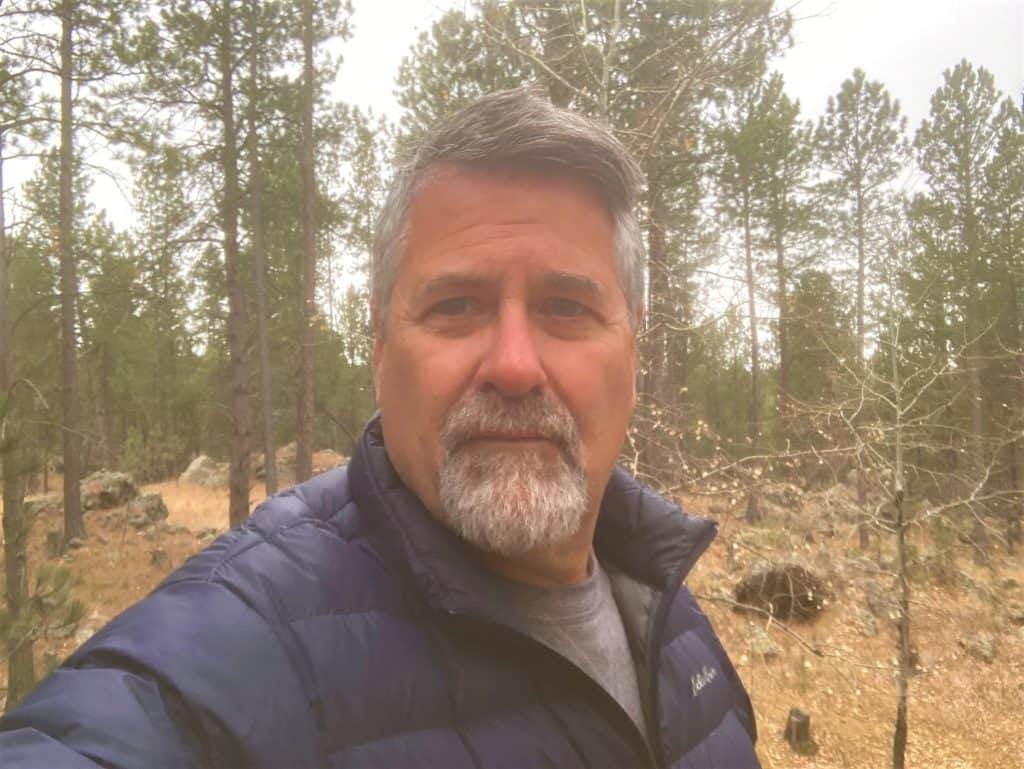
Well, the election is almost over, with something to please everyone! As I predicted, democracy has survived and the wheels of government will continue to grind forward. So back to our usual forest stuff.
A while back, Jim Furnish posted on the future of the Forest Service vis a vis MOG. Dave Mertz another Forest Service retiree, had some thoughts on this as well.
****************************
This may be a watershed moment for the Forest Service. Everyone is looking to the Agency to address the wildland fire crisis in the West. A lot of additional funding has come their way, from the Infrastructure Investment and Jobs Act in particular. I think we all want them to succeed but are they up to the task? There are a number of things that the Forest Service does really well. They are considered by many to be a premier wildland fire suppression organization. Their ability to mobilize forces and equipment is really quite amazing. Their initial attack success rate is also excellent. In the past, the Agency produced incredible amounts of timber for sale. That of course, has greatly declined over the last 20-30 years.
We probably all have our thoughts on how the Forest Service could be more successful. I enjoy reading the Smokey Wire and seeing what other people think. I don’t consider myself an expert but I had a career with the FS and worked in Timber and Fire on a number of Forests. I would like to share a few thoughts for discussion.
For starters, I think the FS needs to decide what is the mission of the Fire Organization and the associated vegetation management program? Is it to protect WUI? Is it to mitigate fire impacts to the general forest and limit impacts to watersheds, etc.? Is it to reduce the impacts of climate change and/or adapt to it? Each of those require somewhat different approaches. Or, are they trying to do it all? I think an argument could be made that they are indeed trying to do everything and not being overly successful in any of those areas.
Since the Fire Plan in 2000, they said they would greatly increase the amount of fuel treatment and prescribed burning. With the exception of R8, they have not really done anything significant in moving the needle. Even though a lot of fire employees were added and dollars were pumped into the system. Are they being smart with the dollars and spending them in the right places? California has the highest rates/acre by far for fuel treatment and then how much is spent in chaparral and other areas, where the impacts are gone in five years? It’s like that old saying “I don’t know where we’re going but we’re making good time!”
If you pay attention to things like the Smokey Wire and other sources, you surely have seen all of the arguments about how logging is the answer to the wildland fire crisis. If we could just thin millions of acres, we would be fine. Turn the loggers loose! Others say no, you have to prescribe burn, that is the answer. Others say you have to do both. Then again, others say that logging and thinning makes the situation worse (Chad Hanson and others). Doesn’t the FS have the science resources to answer these questions? Of course, they do.
Forest Service Research is well funded and has some of the best in their fields. By now, they should be able to definitively say that they have done extensive research, and these are the types of treatments that will significantly mitigate the impacts of low to moderate fire behavior. Occasionally, it will also work at higher levels of fire behavior but when we are dealing with extreme fire behavior, all bets are off. There are no pre-treatments to address that. Everyone needs to be upfront and honest!
The FS has also been saying for many years that they will increase timber management to create more resilient forests. How have they done at that? The excuses are typically insufficient funding, and the crazy environmentalists keep filing lawsuits and won’t let us get stuff done. Well, it appears that they have plenty of funding now and I don’t necessarily buy the lawsuit thing. Maybe in the past, but not now. They have a number of current, categorical exclusions (CE) that for all practical purposes, make NEPA irrelevant. The Public can’t file objections to them, and the only option is a lawsuit. No one wants to file a lawsuit over a CE, it’s not worth the effort and money. Sure, the CE’s have limits on acres, but it is not really that much work to crank them out. Do a bunch of them!
The FS can’t get a lot done if they don’t have an effective hiring system. Hiring was bad 15 years ago and from what I hear, it is now actually much worse. Most Forests have numerous vacancies, and the process is really cumbersome. They also have a new budget system that from what I hear, is good at the RO level but the Forest folks don’t see any benefit. There is no incentive for them to save dollars in order to spend in another area, because they no longer have that option.
In employee surveys, FS senior leadership consistently ranks low within the Federal Government (I have not seen the latest OPM survey, but I am assuming things have not improved). I believe that one of the reasons for this, is it is a small pool of people that will continually move around and move up to get these jobs and they may not always be the best. The FS has really limited reimbursement for moving expenses and no one wants to move on their own dime. I don’t blame them. The cream will not rise to the top with that kind of thinking.
I am hoping that the Forest Service will rise to the occasion. I also hope that they can stay relevant and once again be seen as a premier land management agency. I certainly wish them all the best, as we all should. They are desperate for strong leadership. It really comes down to that. They have an outstanding workforce that can accomplish amazing things, but they need good leadership.
Let’s see how they do over the next couple of years. If I got some things wrong here, please let me know.
Dave Mertz retired from the Black Hills National Forest in 2017 as the Forest’s Natural Resource Staff Officer. Over the course of his career with the FS, he was a Forester, Silviculturist, Forest Fire Management Officer and a Fire Staff Officer. Since retirement, he has stayed involved in Forest Management issues, with a particular interest in the Black Hills NF’s timber program
More Evidence that Rx Fire and Thinning Can Help Slow Wildfires
Article from the Yakima Herald-Republic. Includes maps.
“Scientists reviewing the impact of forest health treatments within the footprint of the Schneider Springs Fire have found that areas treated with both forest thinning and prescribed burns in the decades leading up to the blaze fared better than untreated areas, helping firefighters during the response.”
The article mentions an assessment by Washington DNR forest health scientists — intersting reading. Excerpt:
“The 2021 wildfires included many examples where prior treatments burned at low severity (<25% tree mortality) and gave fire managers more options to directly engage and safely manage fires. However, exceptionally hot and dry weather, high winds, and other factors led to moderate and high severity in other treatments. Based on limited field observations, treatments that included prescribed fire or piling and burning to reduce surface fuels were more likely to be effective, whereas mechanical only treatments often experienced higher tree mortality.”
Mechanical thinning, but not fuels removal.
What’s the Hurry? Take a Deep Breath.. and Reset the Rhetoric
I’ve been thinking about the urge to speed to reach conclusions that occurs in the present day, and perhaps is part of the media subculture at present. Again, there is a depressing book worth reading on this called “Trust Me, I’m Lying” by Ryan Holiday. But for a new better thing to be born, sometimes the old thing has to be broken; both are part of the cycle of progression.
Let’s take a few examples. We discussed the arrest of the Burn Boss a few weeks ago, during which The Hotshot Wakeup Person urged us to “take a deep breath” and wait until the facts surface. For many fire reviews, we wait months to get the After Action Report. There’s an old quote “truth is the friend of time.”
I was suggesting this to a person on Twitter, and they responded “what, and hold it (my breath), until Election Day?”. Which I thought was funny.
And here we are, it’s Election Day. Our President is worried (or says he is, who knows?) about democracy. I’m not.
“Academic experts” are trying to predict the future to a degree of detail.. (more than 2?) that sounds pretty specific.
According to the most recent Bright Line Watch survey, American Democracy on the Eve of the 2022 Midterms, academic experts see a roughly 75 percent chance that more than two high-profile Republican candidates, running for national or statewide offices in the midterm elections, may refuse to concede an election loss.
They did a survey of experts in October to predict what will happen in November. Again, what’s the hurry? What’s the argument for attempting to predict versus waiting and seeing?
Here’s my view. No matter what happens, the great machinery of elections and our system of governance will muddle through with all its inefficiencies and unnecessary drama- not new, as we know or unique to the 21st century. If R’s take over, they are likely to waste time in unnecessary finger pointing exercises, but what party should be casting stones here? There will be lots of hearings and lots of witnesses and occasionally a good thing will get through (e.g. GAOA, the Bipartisan Infrastructure Bill).
We can all check in with our predictions in two years.
The Secretary General of the UN said yesterday:
And our planet is fast approaching tipping points that will make climate chaos irreversible.
If tipping points didn’t exist, they would have to be invented. Unpredictable bad things can happen with climate, for sure. But not-predicted (or predicted by less-important in currently less-preferred disciplines) bad things can also happen outside of climate, including worldwide pandemics and wars among countries with nuclear capabilities- which, of course, have impacts on climate.
Here are my observations:
- People will trust their own observations over any level of rhetoric.
- If you want to win over people, don’t tell them that they are stupid, malevolent, or ignorant, or that their own experiences are unimportant.
- People who speak or act histrionically perhaps think that they are mobilizing people to act.
- In reality, they are triggering hatred, fear, depression and anxiety in people who believe them.
- And mistrust from people who don’t, who either ignore them or react.
- And if the people who don’t believe them react, they are targeted by more rhetoric, and so a negative cycle continues.
But it can’t continue forever, as “the end of democracy” and “the end of the world” is pretty much.. well… the end.
So I propose that those with access to major media take a step back, take a deep breath, and tone it down. Because you might be making things worse instead of better. About the very things you say you care about.
For the rest of us:
What are your predictions?
Happy Election Day, everyone!
National Nursery Directory For Forest Trees and Native Plants in the US and Canada
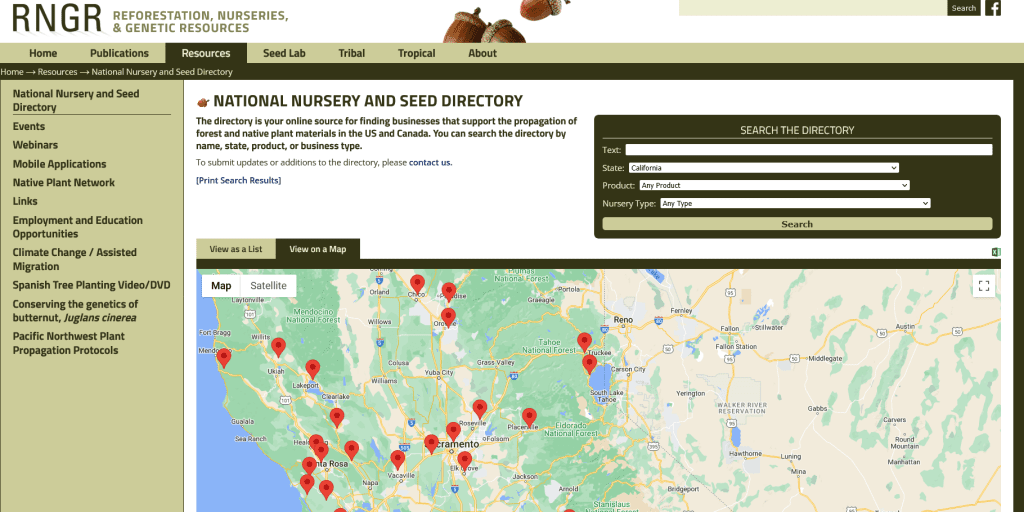
Jon asked some questions about nurseries, and so I went looking to answer the question “what kind of nurseries are there that produce forest tree seedlings?” It turns out that the Forest Service has partnered with Southern Regional Extension Forestry to put up a website that shows nurseries in the US and Canada, . So I’m posting in the interests of public service.
Jon asked about the terms reforestation and restoration. The Helms (1998) Dictionary of Forestry definition for reforestation is: “the reeestablishment of forest cover either naturally or artificially.” Anyone have the newer edition and can check if there’s a new definition? But I think when these people use the term, they probably mean “planting plants that aren’t trees” because reforestation has traditionally dealt with trees (“forest cover” doesn’t usually mean bear clover or manzanita. It’s confusing for sure, as people have always “reforested” burned areas whether they had timber production goals or simply shade goals. And if you’re talking outside what we might call the refo/resto community, restoration may mean prescribed fire, thinning, removing invasives or a variety of things not related to planting plants at all.
Ah, but people will say “trees are not forests, forests are a complex interrelationship…”. While is absolutely true, of course. So perhaps trees are necessary, but not sufficient to be part of a forest. At the same time, it is difficult to imagine “restoring a forest ecosystem” without trees.
Afforestation is defined as “establishment of a forest or stand in an area where the preceding vegetation or land use was not forest.”
Trivia Question
Name the largest human-made forest in the United States (at least according to its website)
